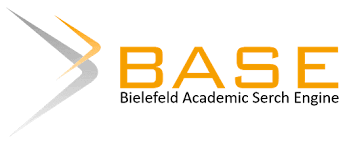CIRI DAN TIPE KATA BANTU BILANGAN DALAM BAHASA BALI
Keywords:
type, characteristic, numeral classifier, endocentric, exocentricAbstract
Generally, this paper is expected to contribute to the preservation and development of the Balinese language. In addition, it is also expected to continue efforts to standardize the Balinese language, as well as be able to contribute in the field of Balinese teaching. Specifically, this paper describes the characteristics and types of Balinese numeral classifier. The theory used in this study is a structural Linguistic theory, from some linguistic books and library materials that are relevant to the problem of this paper. Numeral classifier is a word or form that indicates the noun group, which follows the numeral itself (Kridalaksana, 1982: 76). According to Ramlan (1985: 54), numeral classifier is a word that lies behind the numeral to form a phrase called as a numeral phrase, which may be located in front of the nominal word. In principle, the numeral classifier is a word behind (follows) the number and shows the group of nouns or a number of phrases and may (can) be followed by the noun but positioned in front of the noun. That understanding is used in identifying Balinese numeral classifier. By this theory, it is found that Balinese numeral classifiers have structural and semantic characteristics. Its structural characteristics include morphological features and syntactic features. Morphological features are divided into two, namely the characteristics of a single form and the characteristics of complex form. The semantic characteristic is used to count the number of the noun (people, animals, or goods), for example the word 'ekor' to indicate the existence of an animal. By the type of Balinese numeral classifier, there are two types, namely endocentric type, that is in the form of attributive endocentric and exocentric type.
Downloads
References
Alwi, Hasan dkk. 1993 Tata Bahasa Baku Bahasa Indonesia. Edisi kedua. Jakarta:Departemen Pendidikan dan Kebudayaan Republik Indonesia.
Bagus, I.G.N. 1988. “Melangkah Menuju Masa Depan” dalam Majalah Widya Pustaka. Tahun VI, Edisi Khusus, Oktober 1988. Denpasar:Fakultas Sastra Universitas Udayana.
Bawa, I Bawa dan I Wayan Jendra. 1981. Struktur Bahasa Bali. Jakarta: Pusat Pembinaan dan Pengembangan Bahasa.
Departemen Pendidikan dan Kebudayaan. 1988. Kamus Besar Bahasa Indonesia. Jakarta: Balai Pustaka.
Hadidjaja, Tardjan. 1965. Tata Bahasa Indonesia. Cetakan ke-4. Yogyakarta:UP Indonesia.
Halim, Amran. 1980. Politik Bahasa Nasional 2. Jakarta: Balai Pustaka.
Keraf, Drs , Gorys. 1981. Diksi dan Gaya Bahasa. Ende Flores: Percetakan Arnoldus.
Kersten, J. 1970. Tata Bahasa Bali. Ende Flores: Nusa Indah.
Kridalaksana, Harimurti. 1982. Kamus Linguistik. Jakarta: PT Gramedia.
Kridalaksana. 1989. Pembentukan Kata dalam Bahasa Indonesia. Jakarta: PT Gramedia
Poedjosoedarmo,Soepomo. 1979. Morfologi Bahasa Jawa. Jakarta: Pusat Pembinaan dan Pengembangan Bahasa Departemen Pendidikan dan Kebudayaan.
Ramlan, M. 1985. Tata Bahasa Indonesia:Penggolongan Kata. Yogyakarta:Andi Offset.
Ramlan, M. 1985. Morfologi Suatu Tinjauan Deskriptif. Yogyakarta: CV Karyono.
Ramlan, M. 1987. Ilmu Bahasa Sintaksis. Yogyakarta: CV Karyono.
Saussure, de Ferdinand. 1988. Course in General Linguistics. London: Fontana Collins.
Samarin, William J. 1988. Ilmu Bahasa Lapangan. Yogyakarta: Kanisius.
Slamatmulyana. 1957 Kaidah Bahasa Indonesia II. Jakarta: Djambatan.
Sudaryanto. 1993. Metode dan Aneka Teknik Analisis Bahasa: Pengantar Penelitian Wahana Kebudayaan Secara Linguistik. Yogyakarta: Duta Wacana University Press.
Soetarno. 1976. Sari Tata Bahasa Indonesia. Surakarta: Widya Duta.
Warna, I Wayan. 1978. Kamus Bali- Indonesia. Denpasar: Dinas Pengajaran Propinsi Daerah Tingkat I Bali
Downloads
Published
How to Cite
Issue
Section
License
Copyright (c) 2020 LPPM Universitas Mahadewa Indonesia

This work is licensed under a Creative Commons Attribution-NonCommercial-ShareAlike 4.0 International License.
Hak cipta mencakup hak eksklusif untuk mereproduksi dan mengirimkan artikel ini dalam semua bentuk dan media, termasuk mencetak ulang, memotret, mikrofilm dan reproduksi serupa lainnya, serta terjemahannya. Reproduksi dari bagian manapun dari jurnal ini, penyimpanannya di database dan transmisinya dengan bentuk atau media apa pun, seperti salinan elektronik, elektrostatik dan mekanis, fotokopi, rekaman, media magnetik, dan lain-lain, akan diizinkan hanya dengan izin tertulis dari penerbit jurnal.






1_(1).jpg)











